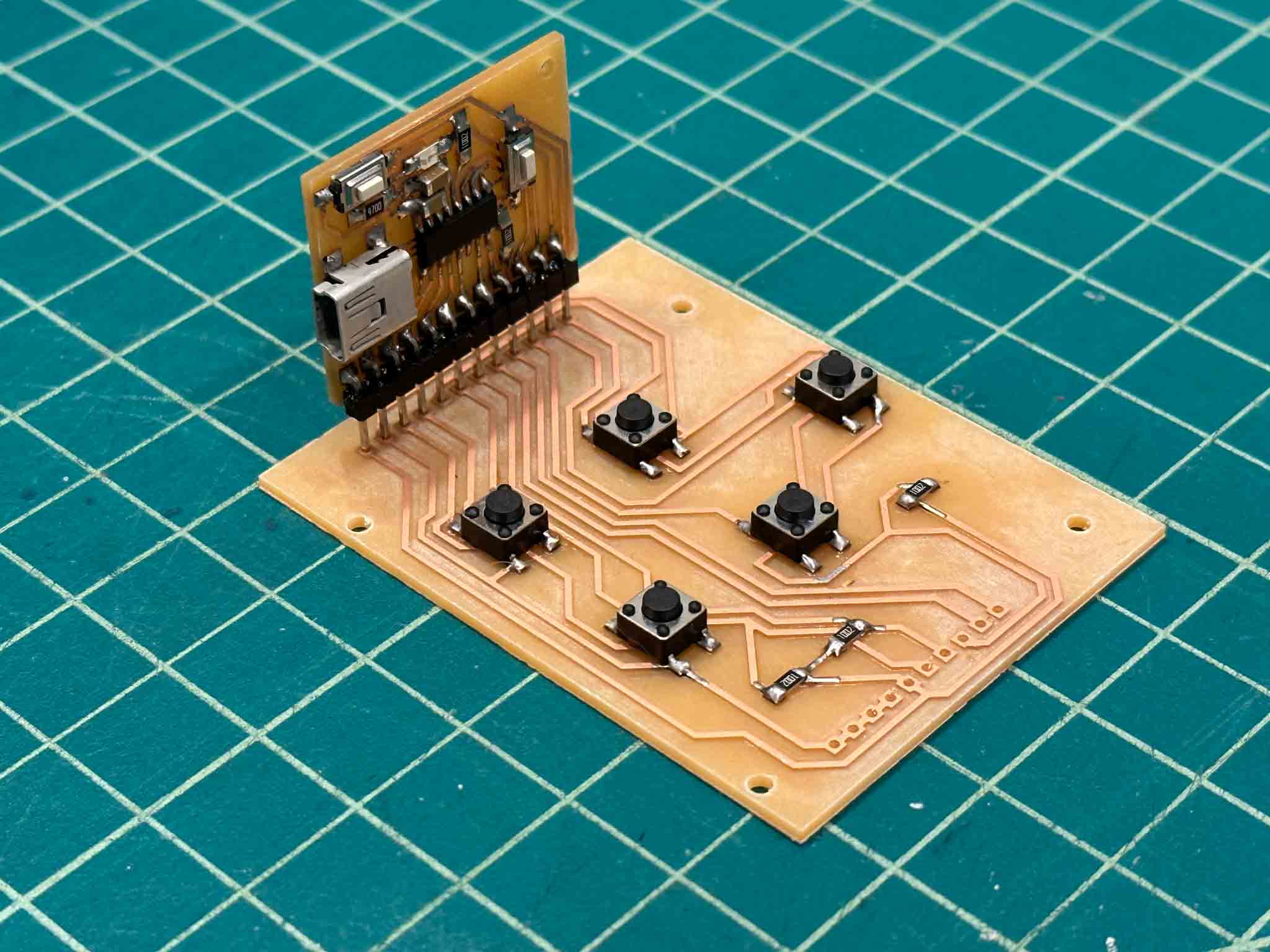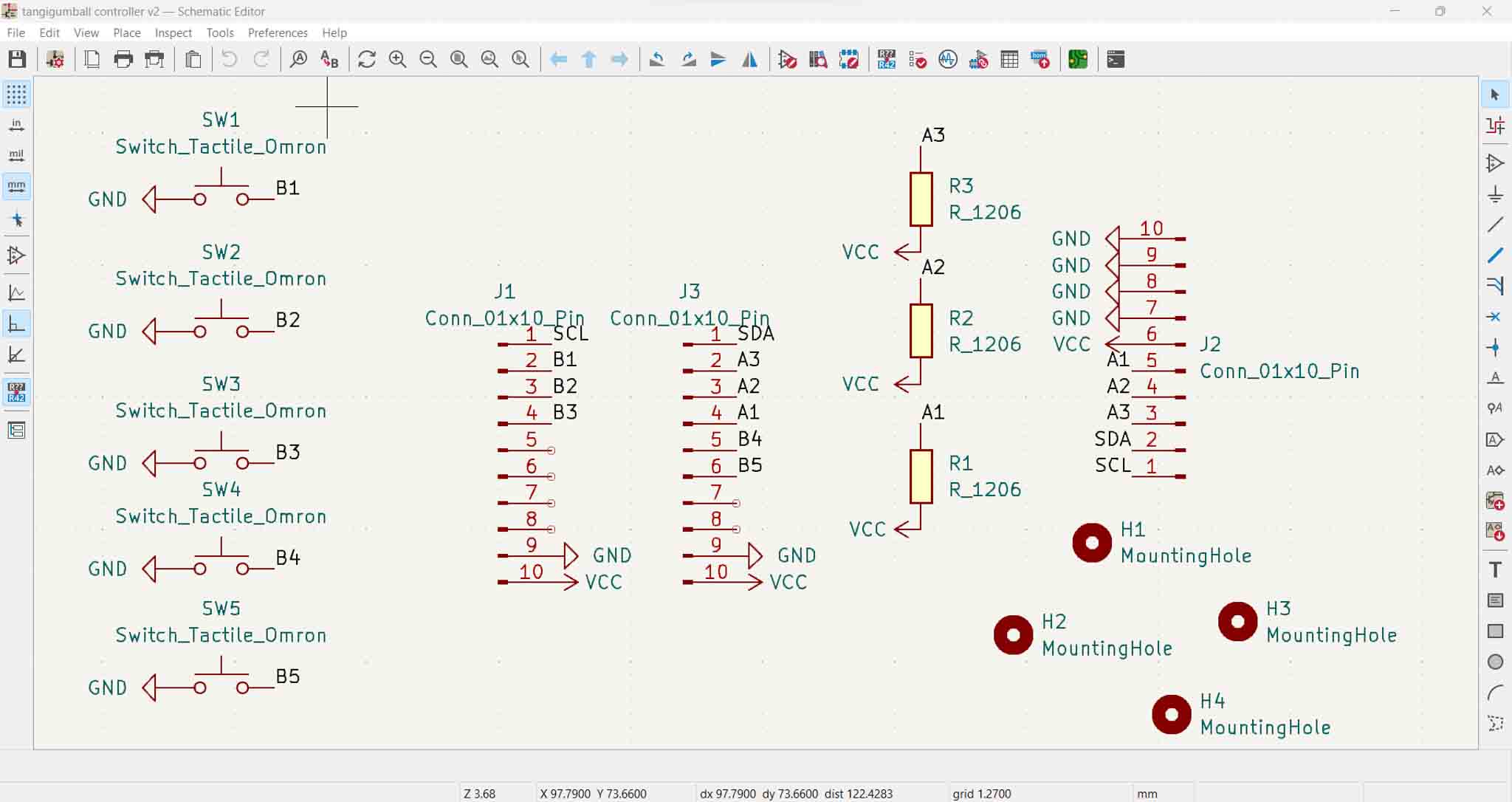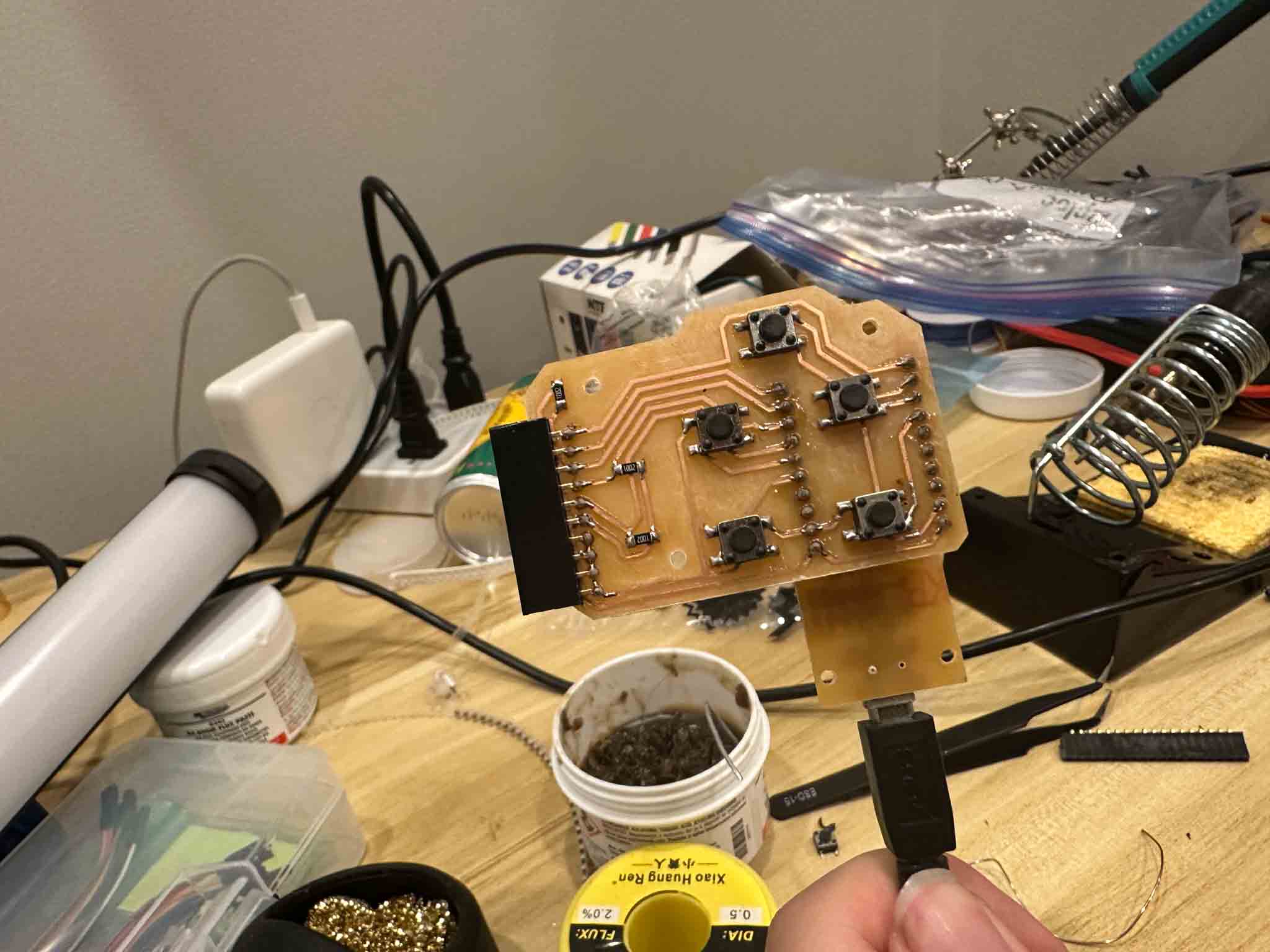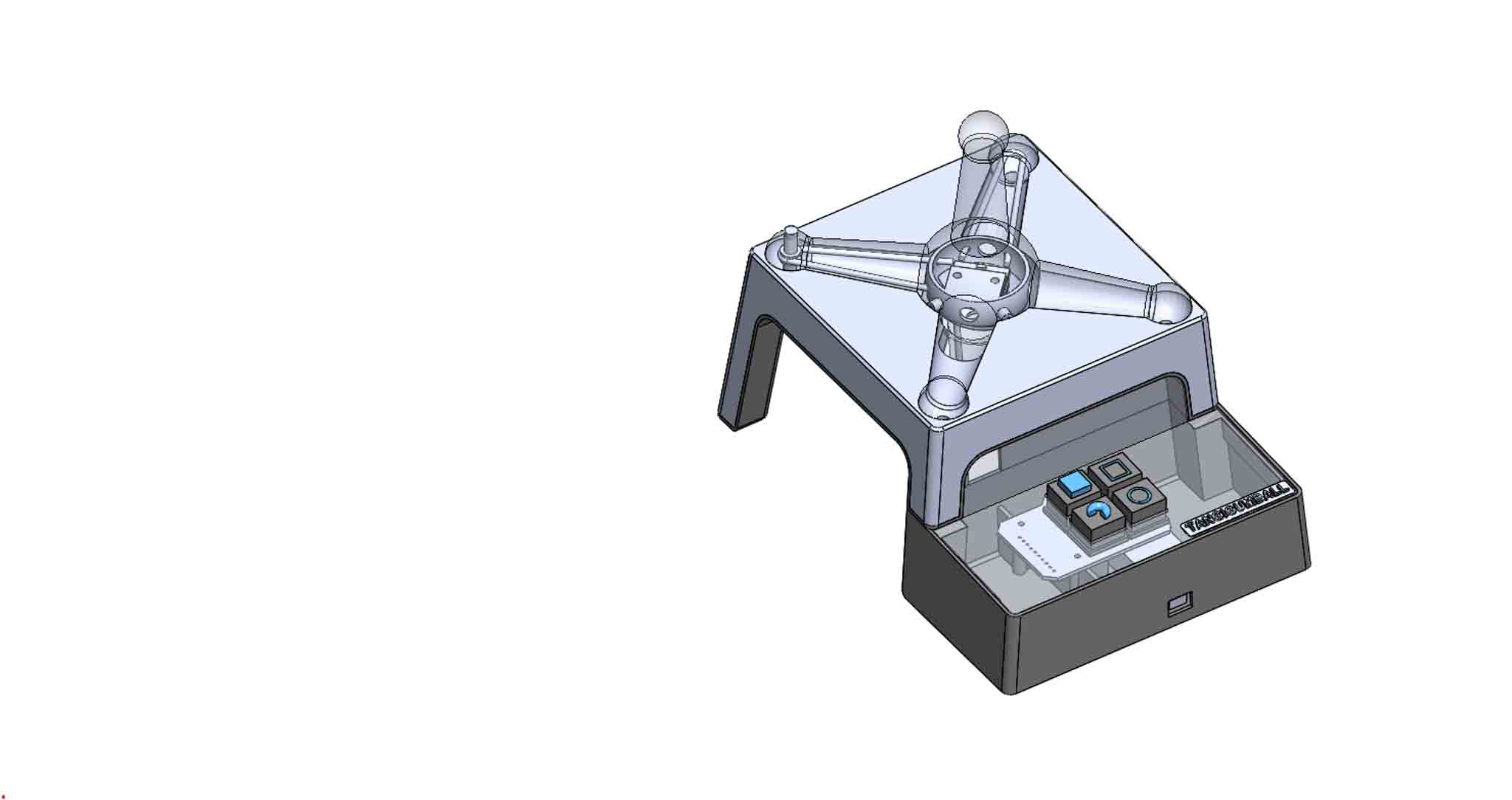
2:30am on a tuesday night.
For input design, I hope to add more interactive elements to my previous casting project. It has 3 strech sensor, and a MPU6050 casted inside.
I started by prototyping the electronics on an arduino.


The interaction in the gif above shows that as the user pull on one of the leg og the gumball, a rectangle on the screen streches. If the user hold it for a few seconds, it will lock in place. Once all three axis is locked, the program will generate a new square for the user to manipulate.
The idea behind this strechable gumball is to create a fun 3d modeling experience that translate some of the digital tool into real life.
Thus I want to recreate these features commonly found in 3d modeling tools like rhino and solidworks:


For the input week, I initally wanted to just use xiaorp2040 and call it a day, but my friend Lingdong suggest he can help me make a micro controller while I learn from him, not knowing the dark abyss I'm about to step in, I agreed.
In total we made 6 different board design, each with their own set of problems.
we started with a SAMD11 which has a similar layout to my earlier board game project, and realized during uploading the program that the bootleg takes up so much space that we can't fit the MPU6050 library on there any more. We then switched a chinese chip that I forgot the name of which had its own hardware problem when used for with the MPU6050.
We then switched to an 80tiny but got too greedy with the ground wiring which resulted not enough connection between the capacitors.
Finally, we used the improve 80tiny design but misplaced the pinouts which forced us to make another one.






During all of this I had to redesign my breakout board for the button controll and resistor for the strech sensor.






Here is the final design of the pcb setup that worked, even this did not escape some extra wiring job.


some other learning we got was that the MPU6050 is very annoying, if not all the pins are used or connected, it would bounce around 2 different addresses that you would have to specify or else it would not connect properly:




I made a casing for the design for convenience of use.
here is the final demo, Lingdong help me mapped that strech sensor and MPU6050 data on to a visualizor where people can make extrudes or revolves from manipulating the gumball.

This video shows how the user can control the viewing angles of the model through rotating the gumball.

When the user strech the gumball, the model in the computer will strech too.

The user can switch modes between extruding and revoling.

conclusion:
Despite the back and forth, the experience of learning how to build a micro controller from Lingdong was very rewarding. I gained a better understanding of the limitation of different chip, shout out to Lingdong!



